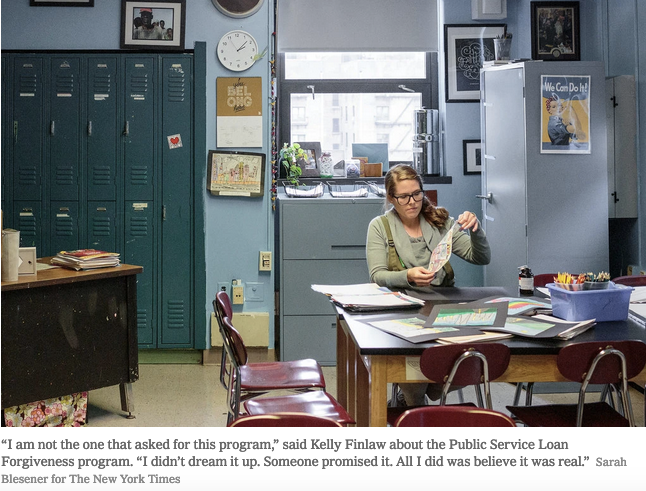WASHINGTON — When Congress created a student loan forgiveness program in 2007, lawmakers wanted to draw people to vital but relatively low-paid careers with a promise: after a decade, if borrowers faithfully paid their debts and pursued their work, they would have the remainder of their student loans written off.
Since then, tens of thousands of graduates were led to believe by their student loan servicers that they would qualify for relief at the end of a decade, only to be shocked when their applications were rejected.
The blame can be spread broadly — to loan servicers who at best failed to inform borrowers of what was needed to qualify, to the single company in charge of the program that has been repeatedly cited for shoddy service, mismanagement and poor record keeping, to lawmakers who wrote in a baffling list of requirements, and to the Education Department, which has failed to step in and correct the problem.
Those affected are people like Kelly Finlaw, who, for a decade, dreamed of small splurges: a new shower head that did not spray everywhere but her bathtub, coffee from a cafe — maybe even an apartment she would own, rather than rent, near the school where she worked in New York. All of that would be possible, she had thought, once the federal government forgave her student loans.
She called that “the light at the end of the tunnel.” Then, in October 2017, she opened the long-anticipated letter and learned instead that the Education Department said her loans did not qualify. “The light at the end of the tunnel went dark,” Ms. Finlaw said.
Fewer than 1 percent of those who have applied for relief under the Public Service Loan Forgiveness program have been deemed eligible. Lawsuits are proliferating, along with dashed hopes.
“We didn’t create a puzzle or a contest,” Representative Robert C. Scott, Democrat of Virginia and the chairman of the House Education Committee, said in exasperation at a recent hearing on the program. “The odds of somebody getting through this process — they’d be better off buying lottery tickets.”
More than 80,000 professionals like Ms. Finlaw have been denied the promised relief, through bureaucratic snafus, confusion over complex rules or just poor management. The first deadline came and went in 2017, and fewer than 1 percent of the 28,000 applicants received anything. Congress rushed to create an emergency “fix” fund last year — and it too had a dismal 99 percent rejection rate.




